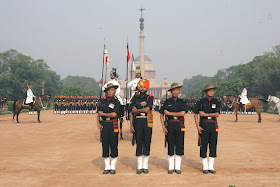Kali pujo(diwali ) marks the end of festivals in Bengal but as we bongs say “the feast must go on”. Bengal is known for it's knack for food and hospitality- two essential part of festivity. There's a whole variety of delicacies prepared during this time- both veg and non-veg. But its the sweets which are arguably the soul of the festive season. Bengal has its share of passions- Football, Politics, Poetry, Music, Fish, adda. But “Bengali” 
Bijoya just went by and I really like it in here. I actually like the concept- I mean besides the good wins the bad funda – people go visiting friends and relatives, do a bit of hugging, the mandatory touching of feets and then we get down to business. Plates of sweets and savouries are laid out on the dinner table- then visit someone else and eat “little” more. I have often wondered why we bongs are so fond of sweets. I suppose it has something to do with the arrival of portuguese in bengal in the 17th century. It was some Portuguese colonist who introduced bengal to cottage cheese and then the moiras took over.
The most famous sweet maker of all time was Nobin Chandra Das. In the 1868 he famously created rossogolla, as we bongs fondly call it. Some 50 years after that his son K C Das created rossomalai or rasmalai. But while chhana may be the mainstay of bengali sweets , there are lot many sweets prepared from flour, rice powder(aatop chal), pressed rice, puffed rice, coconut, semolina, lentils and so on. Poush Parbon for instance is a festival dedicated to pithey , which are prepared with rice and its derivatives, flour, coconut, thickened milk and jaggery. Then of course there is the wonderful called notun gur – or date molasses. This is used to produce some of the best sweets I have ever had- sondesh, rossogolla and payesh and lets not forget the mishti doi, the much loved creamy and thickened sweet yoghurt that no celebration is complete without. As far as sweets are concerned innovation truly is rubbing shoulders with tradition. I love to eat jholbhora at Oh Calcutta – it has a hollow middle that's filled with molasses or rose essence. Most of the bengali sweets are prepared with cow's milk which is kinda easy on the stomach. In winters , eating a hot rossogolla out of kadhai is something close to nirvana.
The great thing about bengali sweets is that quite a few of the best known varieties are now available elsewhere in the country.






















0 comments:
Post a Comment